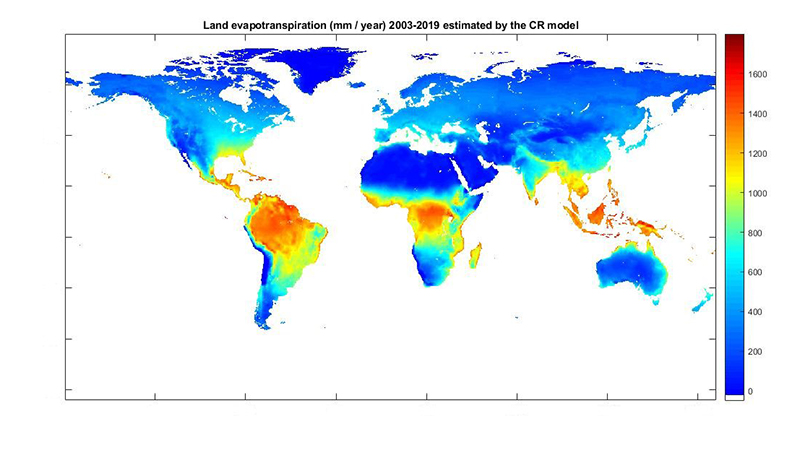Posted: 3/18/2022
Szilagyi corrects NASA’s estimate of the global land evapotranspiration increase

Joe Szilagyi of the Conservation and Survey Division is a member of the international team which discovered an elemental error in the recent global land evapotranspiration (ET) trend estimate, published in the journal Nature (https://doi.org/10.1038/s41586-021-03503-5) by scientists from NASA’s Jet Propulsion Laboratory of the California Institute of Technology and the Goddard Space Flight Center.
The NASA team forgot to account for the grid area change by latitude in one of the global precipitation data products they applied for their water-balance estimate of the global land ET rate over the 2003-2019 period. This error led to a large overestimation of the ET increase which they thus erroneously specified to be around 10%. “The grave error in the precipitation values was first discovered by Ning Ma, a brilliant young Chinese scientist, whom I have had a very fruitful scientific collaboration with over the past several years” Szilagyi notes. Ma is a research scientist of a Chinese Academy of Sciences team focusing on regional and global hydrology directed by Prof. Yongqiang Zhang.
The study led by Ma and Zhang derived a more realistic global land ET increase not exceeding 5% for the same period, much less than what the NASA team specified. This increase is corroborated by the combined application of several global atmospheric reanalysis, remote sensing, and climate models. "In fact our unique diagnostic model built on the complementary relationship of evaporation concept (https://doi.org/10.1029/2021WR029691), yields a 3.3% increase for the same period (data available at https://zenodo.org/record/5501117#.YgOLnGgzaUm), in accordance with the above, significantly more complex and data intensive models" Szilagyi adds.
"We submitted to Nature our discovery of the error in the NASA team’s study and also specified by two independent approaches the global land ET rate increase we are certain to be more realistic. Our action eventually led to a retraction of the original paper, which thus also resulted in our study not being considered for publication by Nature due to the retraction" Szilagyi explains. "But this is how science progresses sometimes" Szilagyi concludes.